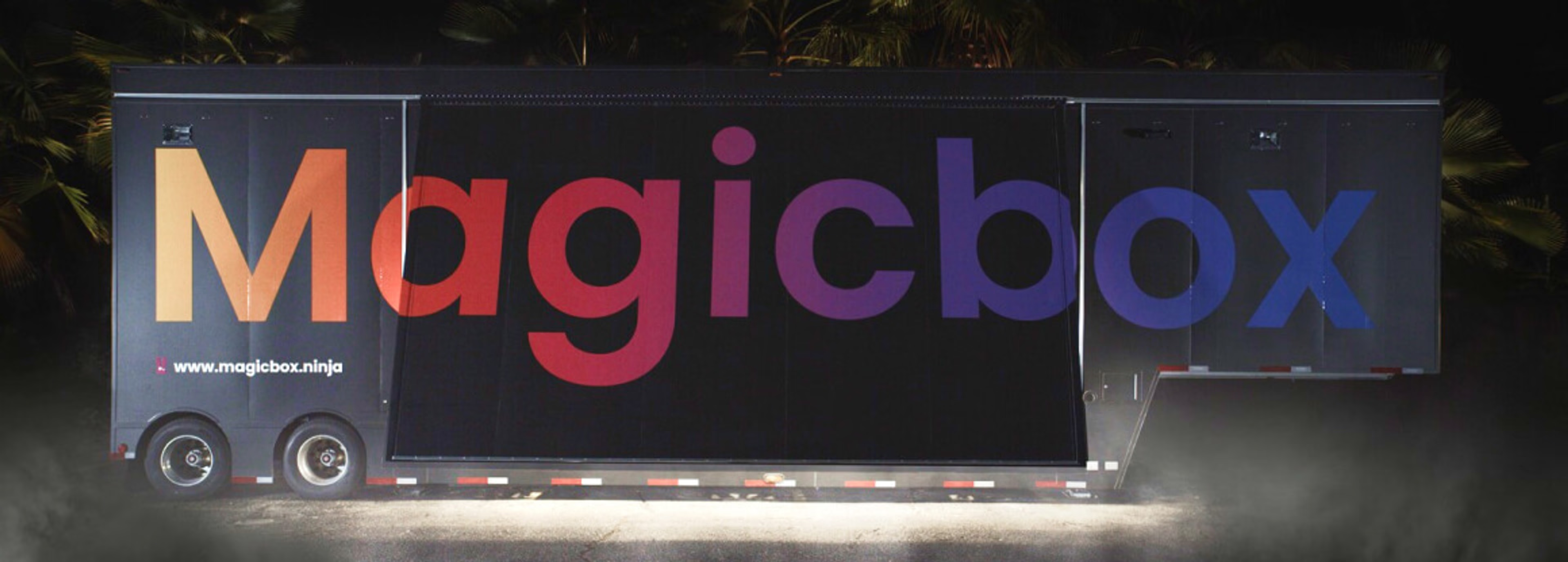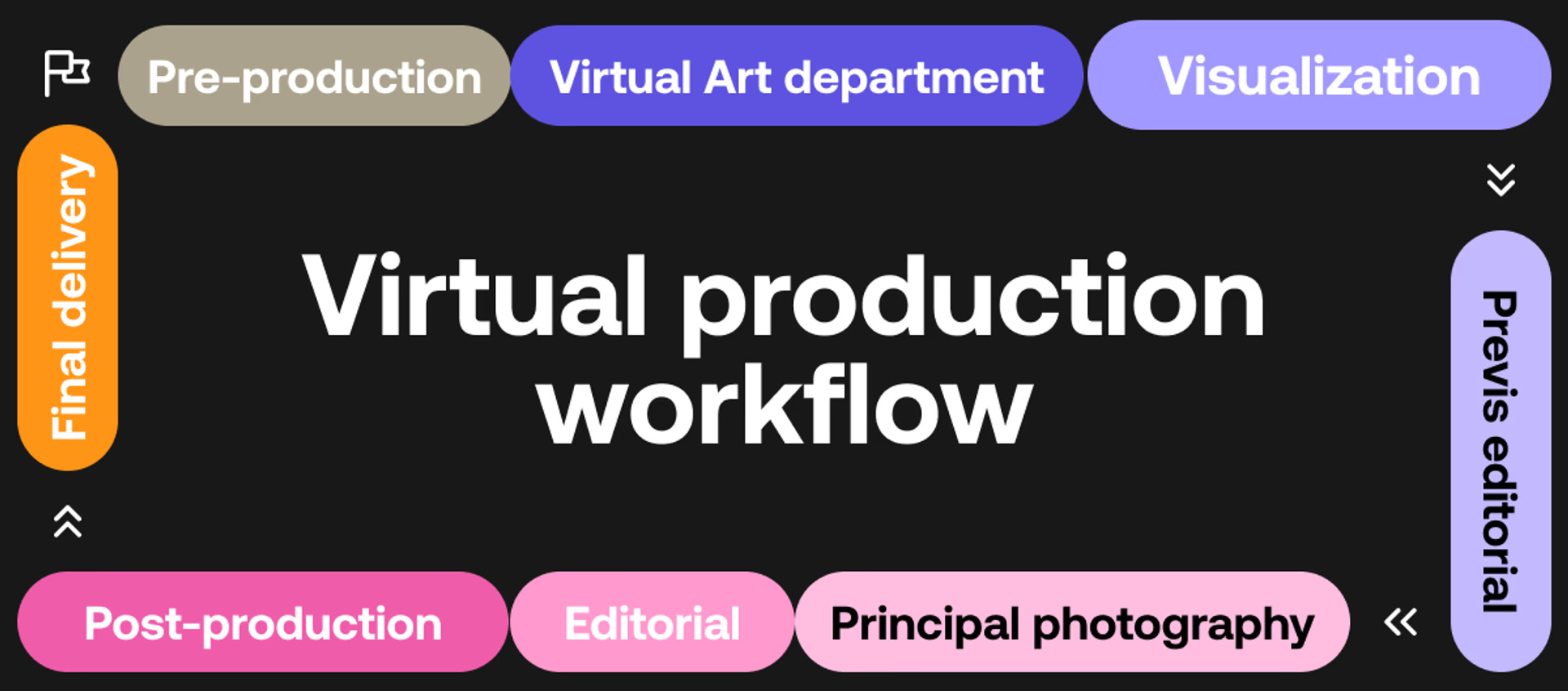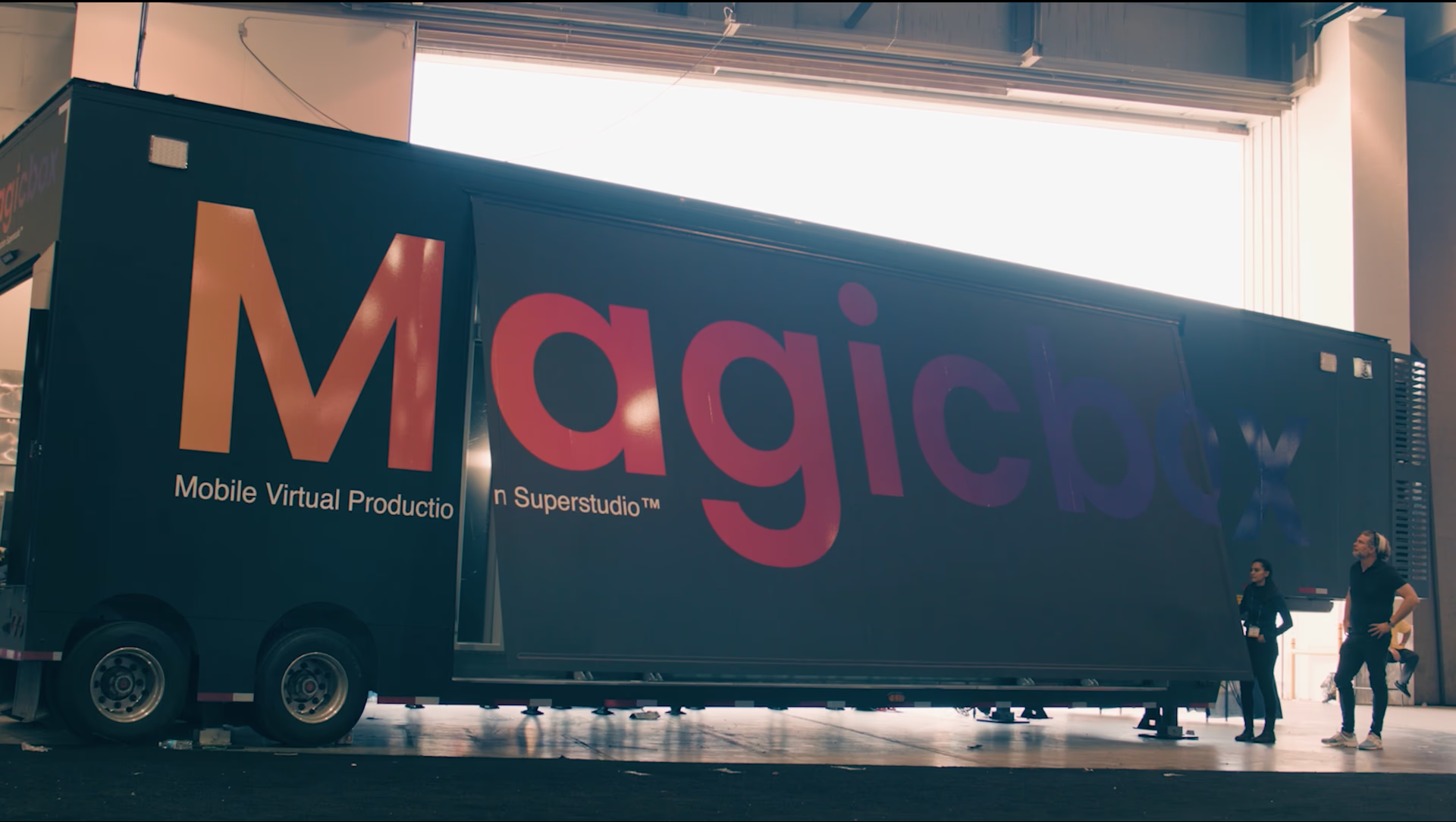Breaking new ground with virtual production and remote collaboration
September 2024
4 mins

Table of contents
Just add LucidLink
No barriers to entry. Nothing new to learn. Known and familiar user interfaces that you choose for your team.
Start your free trialIn the past, size mattered in production and post.
Teams relied on vast sound stages with green screens. Meanwhile, huge server rooms housed all their media and equipment — from cameras and videotape recorders to editing suites.
But this scale inevitably led to rigid locations, higher costs and less creative flexibility.
Today, new tech is giving teams more freedom to create, produce and distribute video from anywhere. One such innovation is LED volume virtual production.
To dive deeper into this groundbreaking tech, we spoke to Brian Nowac, CEO and Founder of Magicbox.
Virtual production and LED volumes
Before we hear from Nowac, let’s cover the basics.
Using CGI, augmented reality, motion capture and more, virtual production creates realistic environments on virtual sets. With the ability to craft stunning visuals without leaving the studio, the possibilities are endless.

At the heart of virtual production are LED volumes — a system of linked high-end LED panels to display video footage or 3D content to form a background behind the actors. It's like shooting live-action in front of a giant sophisticated TV screen.
Making LED volumes more accessible
While LED volumes are becoming more mainstream, in most cases, accessibility remains an issue. A considerable hurdle is cost, which can exceed $100,000 per day for top-tier stages.
This price tag puts it out of reach for a significant proportion of potential users — for example those who want to create commercials or promos, TV and indie features or footage for corporate and higher education.
“Many potential users of virtual production stages are put off by the perceived time and cost it takes to build a custom LED Volume to suit their project’s needs,” says Nowac. “Other people are concerned about paying for downtime in an LED volume they aren’t using between production days.”
Magicbox is helping solve these issues by making LED volumes more accessible.

How Magicbox makes virtual production mobile
Magicbox brings the LED volume to your location, transforming from a semi-trailer into an LED studio in minutes. It’s a much faster way to use LED volumes for in-camera VFX (ICVFX) productions.
“Now, you have the power of virtual production anywhere you want it. You don’t have to duplicate your support systems and crews to service principal photography in one location with virtual productions in another. You can use it as a second unit next to a soundstage or one of the giant LED volumes, or just in a random parking lot. You can even use it on the street in front of your house,” adds Nowac.
Magicbox’s setup takes less than an hour, eliminating weeks of planning and setup. “This means the total costs to use Magicbox could be 10-100 times less for the same production day. Plus, you only pay for what you need. Magicbox arrives when and where you need it. It sets up and is production-ready in less than an hour. And when you’re finished, it disappears,” states Nowac.
Instant access to remote footage
Magicbox takes its convenient and cost-effective approach a step further by allowing clients to remotely connect footage captured on set with their creative teams using LucidLink.
A producer or an editor could be next door, in the next state or in another time zone,” says Nowac. “It doesn’t matter since LucidLink cloud storage acts as your gateway to real-time creative collaboration. The workflows remain the same as virtual production workflows, but with LucidLink, Magicbox clients have the added benefit of shared access to assets as they are produced.”
Cost-effective, collaborative post-production
“Like any other VP workflow, using the LED studio brings post-production into the conversation much faster. Now, post is actively creating assets during pre-production and even consulting on set during production. This is all designed to get the project closer to final pixels ‘in camera,’ which should reduce the overall cost of post-production,” explains Nowac.
Here’s how it works:
Immediate feedback: directors or cinematographers, even if on another stage or in another country, can view and comment on dailies instantly.
Efficient assembly: editorial teams can begin assembling cuts quickly and identify pick-ups before the set is struck or the team moves location.
Simultaneous processes: VFX and color correction work can start while photography is still happening, providing real-time feedback to creatives on set.
This results in a seamless workflow where time-consuming post-production stages are integrated into the production process.
The evolution of virtual production
Virtual production is more than just filming inside an LED volume. It involves a suite of technologies encompassing pre-production, production and post. The key is thorough planning, testing and iterating on virtual assets before arriving on set.
Connecting the cloud to on-set photography in real-time is the next step. Files can be sent directly from the camera, with metadata, onto secure cloud platforms. Tech like LucidLink lets remote collaborators access and work on shared files instantly.
“Getting everything done while your cast, crew and gear are all together can deflate your overall production timeline, lower the overall production costs and potentially reduce your time to market,” says Nowac. “All of this means you have the potential to see ROI faster.”

A new era of creative freedom
The next generation of virtual production and remote collaboration tools like Magicbox and LucidLink are changing the production landscape.
By making advanced technology more accessible and collaboration easy from everywhere, these innovations are paving the way for a new era of creative freedom.
See how LucidLink’s cloud storage and collaboration platform fits into your virtual production workflow here.
Or try us out with a completely free 14 day trial.
Keep reading

How The Finish Line reclaims time to make work-life balance a reality
Discover how The Finish Line uses cloud workflows to support remote post-production, creative collaboration and make every second count.
10 April 2025, 6 mins read

The creative secrets behind the critically-acclaimed series, The Bear
Discover the secrets behind the success of the critically-acclaimed FX production, The Bear.
11 April 2024, 9 mins read

Remote collaboration fuels Oscar-winning success for the team behind 'The Boy, The Mole, The Fox and The Horse'
Brought to life during the COVID-19 pandemic, the film included the exceptional remote teamwork of more than 120 people from over 20 countries in production over 16 months.
11 April 2024, 6 mins read
Join our newsletter
Get all our latest news and creative tips
Want the details? Read our Privacy Policy. Not loving our emails?
Unsubscribe anytime or drop us a note at support@lucidlink.com.